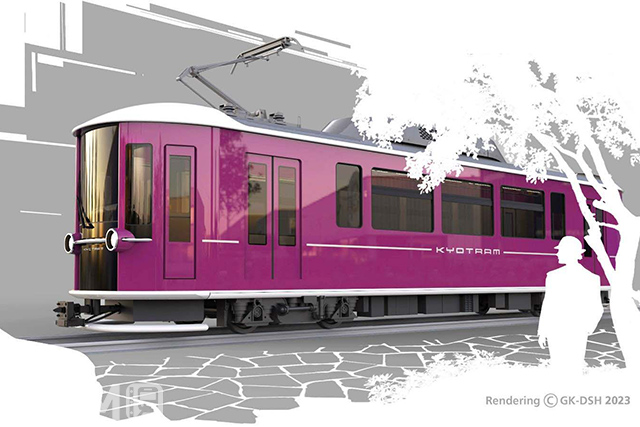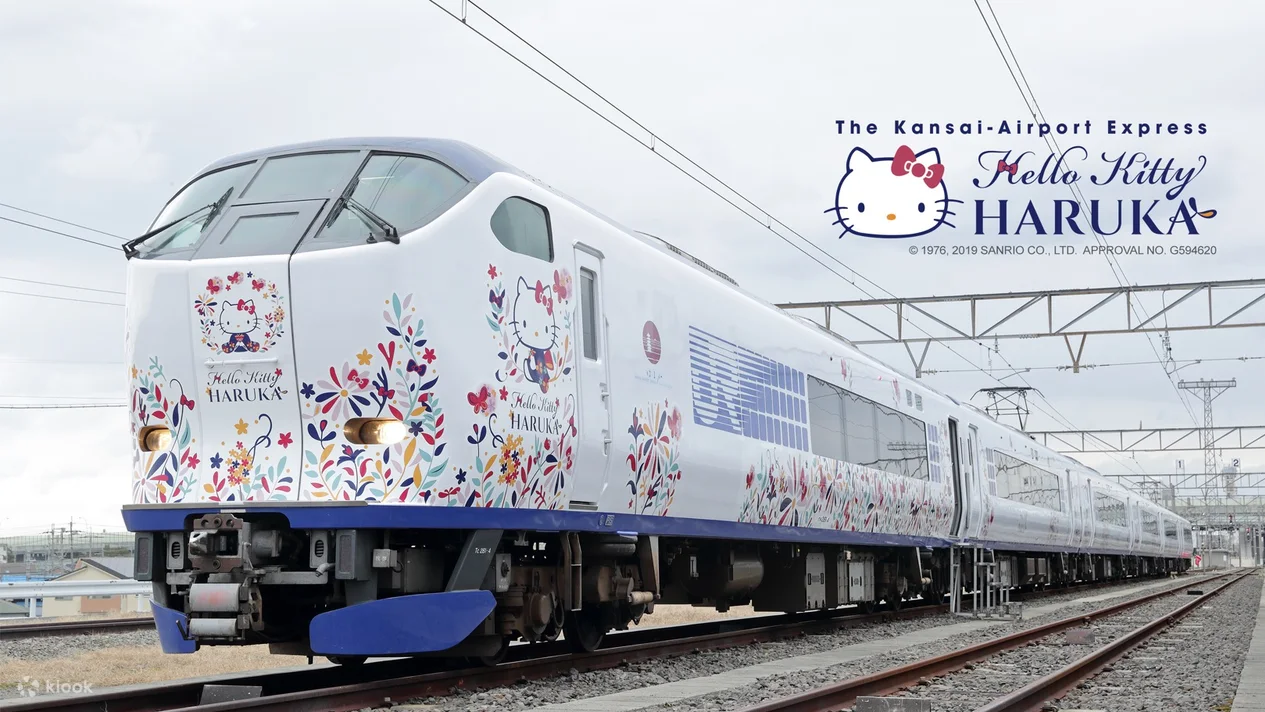From 2024, Keifuku Electric Railroad will introduce a total of seven new “KYOTRAM” tram cars, which are barrier-free and have excellent energy-saving performance, to replace existing cars that are significantly aging.
- Design that makes the cityscape more charming
- [Chart] The introduction schedule, features, and design image of Randen’s new tram car "KYOTRAM."
- Regenerative braking contributes to CO₂ reduction

Design that makes the cityscape more charming
Of the 27 electric passenger cars enrolled in Randen, the “MOBO 101 type ” (6 cars) and the “301 type” (1 car) have been manufactured for 50 years, and the electric motors of them for over 90 years. In order to solve problems such as frequent breakdowns, difficulty in procuring parts, and lack of accessiblity facilities, they will invest 1.68 billion yen in equipment and start replacing them with new models.
JR Haruka Kansai Airport to Kyoto/Osaka/Tennoji Express Ticket
The first KYOTRAM will start commercial operation in 2024, and the remaining 6 cars are scheduled to be introduced sequentially from 2025 to 2028. Randen’s new tram car will be the first in 23 years since the MOBO 2001 type, which started service in 2001.
They say that the aim was to create a design that would make the “streets with Randen” more attractive, and the car body with large windows is dressed in Randen’s image color “Kyoto purple.” The curved shape of the front of the car body, which is impressive in its simple form, is a tribute to the traditional “streetcar” and the old model of Randen.
GK Design Research Institute Hiroshima (Headquarters: Hiroshima City) was in charge of the design. They have strong ties with the Keihan Group, including Keifuku. They have been also involved in the unification of vehicle designs such as cable cars and ropeways that operate in the Hieizan / Biwako area, as well as the overall rebranding of Keihan Electric Railway train cars and station sign systems.
(See the chart below for details such as the introduction schedule, features, and design image of Randen’s new tram car “KYOTRAM.”)
Regenerative braking contributes to CO₂ reduction
The nickname KYOTRAM has the meaning of a tram in Kyoto that is “both kind to people and the earth.” In addition to a design that takes into consideration the scenery, they have also achieved a safe and comfortable interior space and reduced environmental impact.
The on-board facilities are fully accessible and multilingual information is available. Equipped with a particle ion “nanoe X” generator developed by Panasonic, safety and comfort have been improved down to the smallest detail, such as the use of bucket seats, and improvements to hanging straps and handrails.
KYOTRAM’s running equipment is equipped with VVVF inverter control and regenerative braking, and it is expected that the power consumption per car can be reduced to about half compared to current resistance control cars. Regenerative braking is an electric brake that operates the motor as a generator when the train brakes and returns the generated power to the overhead line. That energy can be effectively used by other trains, contributing to the reduction of CO₂ emissions along the entire route.
In addition, two existing VVVF cars, the 2001 series, have undergone remodeling work, and are scheduled to be equipped with regenerative brakes for the first time in Randen and to start operation on a regular schedule from the end of June. A new regenerative power storage system will be installed until March 2024, and they will develop an efficient system to enable 100% utilization of the generated electricity.
![[WTM] Railway & Travel News](https://en.wtmnews.net/wp-content/uploads/sites/3/2020/11/cropped-wtm_logo.png)

![[Chart] The introduction schedule, features, and design image of Randen's new tram car "KYOTRAM."](https://en.wtmnews.net/wp-content/uploads/sites/3/2023/06/9912f1aaad5ededcb88940415b5e80e0.png)
 [JR Pass] Japan Takayama-Hokuriku Area Tourist Pass including the Hokuriku Shinkansen bullet trains and buses to Shirakawago (Delivery to Multiple Countries) (Ad by KKday)
[JR Pass] Japan Takayama-Hokuriku Area Tourist Pass including the Hokuriku Shinkansen bullet trains and buses to Shirakawago (Delivery to Multiple Countries) (Ad by KKday)